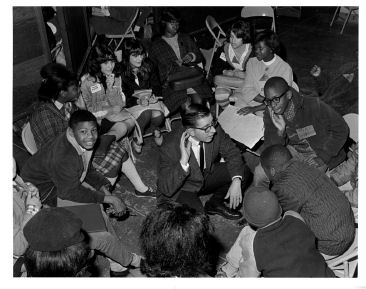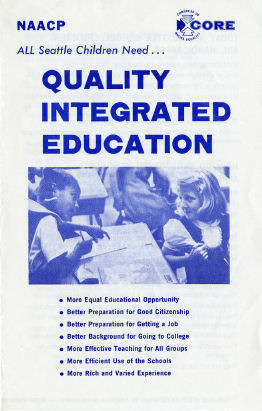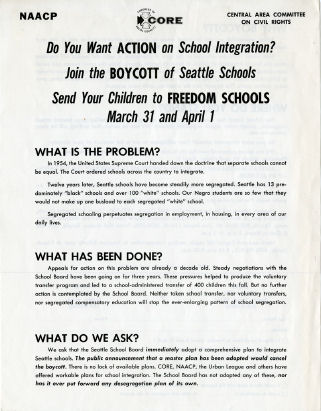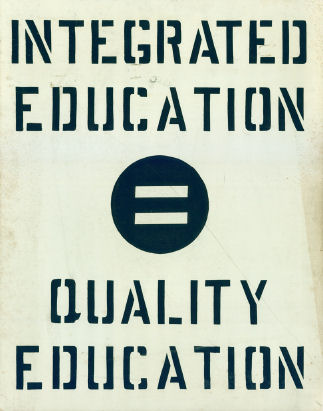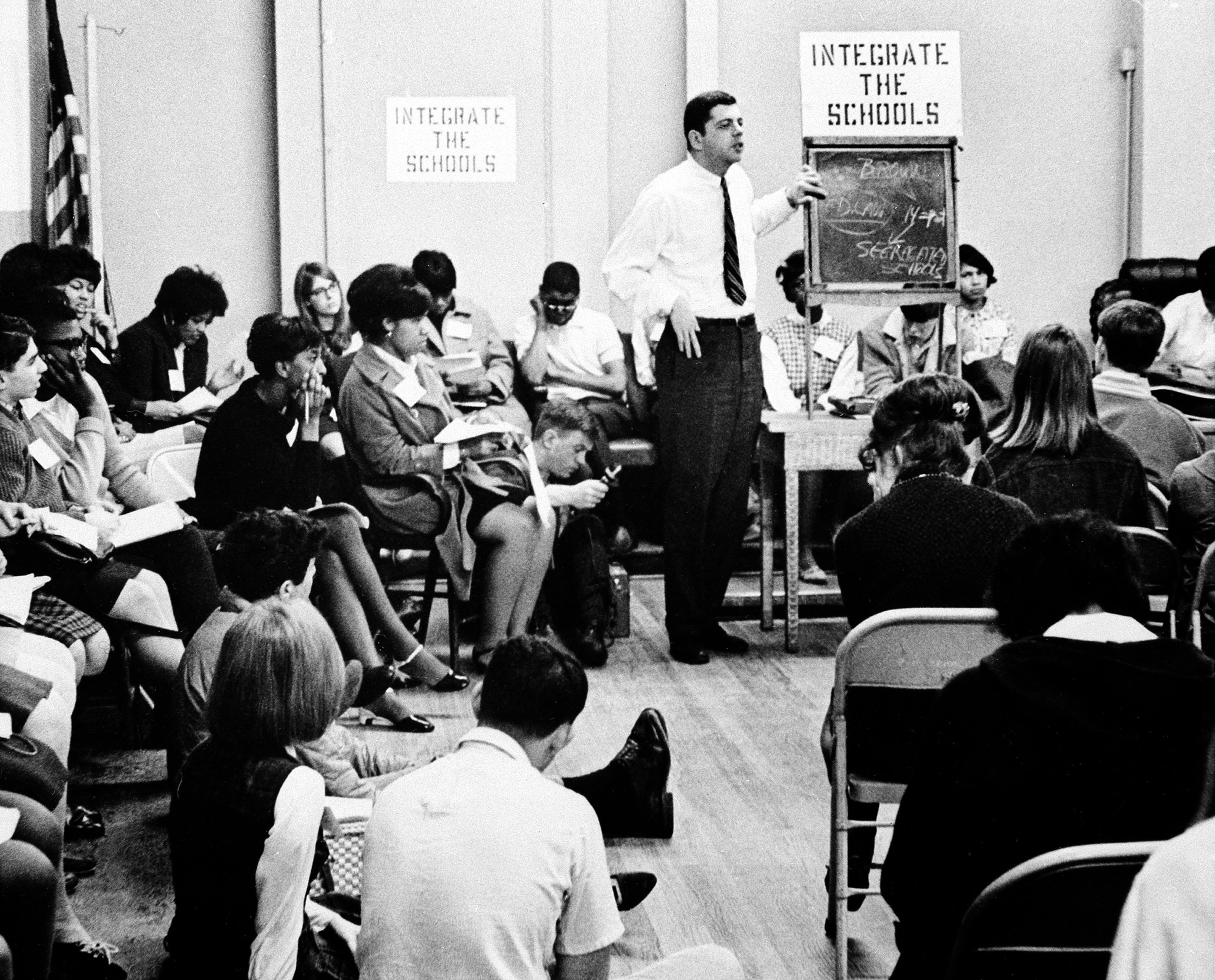Education Actions
Seattle CORE's Efforts to Integrate Schools in Seattle
The Seattle School boycott and the Freedom Schools are probably the most dramatic, controversial and publicized of the CORE projects. CORE, the Urban League and the NAACP had tried for years to work with the Seattle School District to integrate the schools. We all were convinced that integration was necessary to achieve quality education. Each organization submitted multiple plans to achieve this but had not had any cooperation. The district felt that there "wasn't a problem."
In February of 1966 we decided the only way to get their attention was city-wide school boycott, and began work that involved two days of Freedom Schools, March 31st and April 1st of 1966.
In only 42 days a multitude of CORE and community members arranged for 14 Freedom School sites, mainly Central Area churches and community centers. We planned curriculum, including Negro history, science, art, and music appropriate for first grade through high school. Staffing included Negro and white co-principals for each school and many volunteer teachers for the classrooms. We did intensive training emphasizing the well-being and safety of all the children, and we expected to provide a meaningful educational experience in an integrated setting. This was an intense time of productivity and logistical challenges with a lot of unknowns and suspense. In spite of weeks of house meetings with parents in the Central Area, leafleting and other community organizing efforts we had no way of being sure what the participation would be.
There was exceptional coverage of the proposed boycott in all the media, opinion pieces and interviews with students and clergy of all faiths. This was not a popular or well understood action and while there was notable support from the Unitarian and Catholic churches, a number of downtown ministers spoke against the boycott saying, "They are exploiting children and teaching them to break the law." Much to our relief and joy the boycott turned out to be an overwhelming success, with nearly 4,000 students attending over these two days, two-thirds of them Negro and one-third white. We were rewarded by statements such as a Negro mother saying, "I'm so proud to be a Negro! My child learned so much about the contributions of Negroes to our country."
Over the next months, we gradually achieved a number of results we had been requesting for years: Negro history in the curriculum, more Negro teachers and administrators, paid transportation for transfer students and support for students coming to the transfer schools.
Attitudes about integration have changed over the years. Having effective schools and providing the best education for all our children is still a challenge today.
Top of page photo credits: AP images 660331010.

